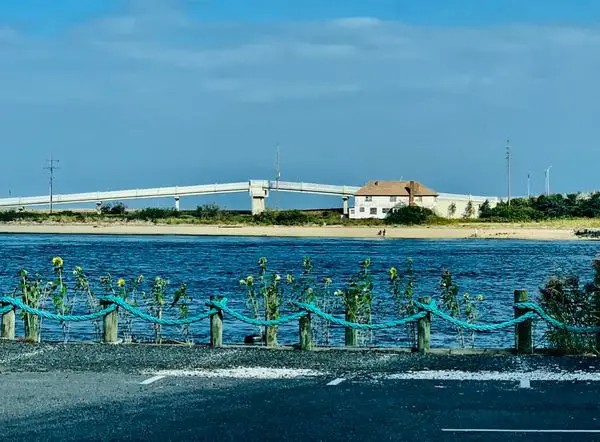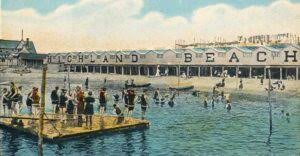Demolishing In spite of a decades long fight to prove its authenticity and importance, despite being named by Preservation New Jersey as one of the state’s ten most endangered historic places, and in spite of very strong pleas from numerous descendants of families who summered there, the once-captivating Sandlass House at the entrance to Sandy Hook is on the list for demolition by the National Park Service.
That was the news at this week’s meeting of the Fort Hancock 21st Century committee when Gateway National Park Superintendent Jen Nersesian announced the park service has reached a conclusion after years of study, research and investigations by various historic offices in the Park Service.
Susan Sandlass Gardiner, one of the generations of Sandlass family who treasured the history of the former amusement park and summer go-to spot for New York and New Jersey residents seeking sunshine and relaxation during the summer months, was not present at the meeting nor was she notified in advance of the park service’s final decision. Upset by the news, but with determination in her voice when contacted after the meeting, Gardiner declined to make any comments on the action other than to highlight some of the history of the Sandlass House.

Though Preservation New Jersey was hopeful being added to its list could buy some time for Gardiner and her supporters to figure another option to present to the Park Service, she was not hopeful even then. “It adds more credence and credibility to our case, certainly,” she said. “It gives it more significance, but it can’t make a decision.”
In making the announcement Gateway National Recreation Area’s Superintendent Jen Nersesian praised the work of Gardiner and those supporting reconstruction of the Sandlass House. She cited all their efforts and research over the years, admiring their tenacity and determination.
However, she said the history of the building as researched by National Park Service in relationship to its importance and relevance to the national park service, does not rise to the level for historic preservation. “So the building will be demolished,” the superintendent said.
There were no indications of when demolition would take place or what use the piece of land on which it was built will be used.
The Highlands Beach Resort was built in 1888 by William Sandlass Jr., who leased the land. The Highland Beach Gravity Railroad, one of the first roller coasters on the East Coast, was the initial attraction. The house was built five years later and was built from the frame of the disassembled roller coaster.
In 1910, a merry-go-round, pavilions, restaurants, bars and storefronts were all part of the development, and the recreation resort was attracting as many as 20,000 people per day at its peak.
When the land south of Fort Hancock to the Highlands Sea Bright Bridge, now the Captain Joseph Azzolina Bridge, was designated as a state park, the resort was seized through eminent domain. The family was eventually paid $350,000 for the house, land and other buildings in the resort.
In 1979, the National Park Service took over all of Sandy Hook, including Fort Hancock and the Sandlass property, as part of the recreation area. For a while, the House served as a base for park rangers who also served as caretakers. The ranger-tenant policy ended in 2012, four months after Superstorm Sandy had also inflicted considerable roof damage to the house
The building has been unused, empty and deteriorating since then.
Gardiner, who grew up there until her family moved in 1963, had been seeking to have the Sandlass House made part of the leasing program and was supported in that quest by Preservation of New Jersey.
While Nersesian admired all the efforts, she pointed out that the house does not have the national historic recognition required in order to be preserved by the Park Service.





